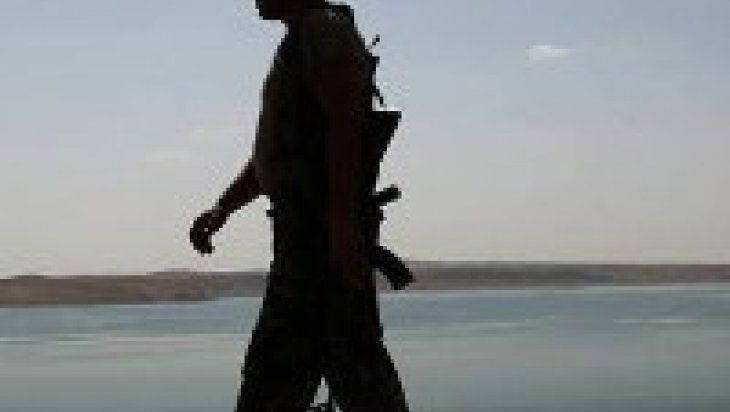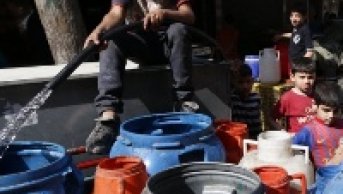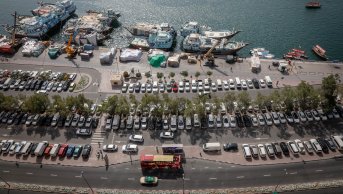ISIS Using Water Resources as a Weapon

Scenarios have been generated claiming that water could lead to conflicts or war in water-scarce regions, and the Middle East was pointed out as the most probable arena for those scenarios. The past experiences also show a possibility that water resources in the Middle East, where numerous conflicts take place, might lead to either collaboration or conflict between countries. Thus, political intentions of countries shape the state of water resources. On the other hand, water resources are also known as one of the primary targets to be seized or hit during conflicts and wars with the aim of weakening the opponent.
Recently, ISIS attacks on water resources and structures (dams, pipelines, irrigation canals etc.) in the region have raised the strategic importance of "water resources" once again. ISIS has been using water resources as a weapon by cutting off water flow to the villages standing against the rules set by ISIS.
In Iraq which is located in a semi-arid and arid climate zone, the amount of rainfall has declined. The use of water in turn, especially in densely populated areas, has increased, and 50 percent of water has been wasted due to the mismanagement of water resources and leakages from pipelines over the last few years (The UN, March 2013). Iraq is facing water shortage. Some 85 percent of water resources in Iraq has been used in agriculture to grow wheat. The fact that ISIS seizes control over dams and cuts off water flow negatively affects wheat production and livestock. Besides, drinking water and power generation is also provided through dams. In other words, the intervention has a negative impact on drinking water supply and power generation as well. Seizing control of the dams on the Euphrates-Tigris rivers, ISIS prevents people in the region from having access to water, and causes them to turn towards alternative unsanitary water resources.Consequently, this causes to an increase in water-borne diseases, and leads those people to migrate to other regions due to the water cuts.
The dams chronologically seized by ISIS within the Iraqi borders are as follows:
In April 2014 ISIS took control of Fallujah which is located on the Euphrates river, and opened the dam's gates in order to avoid the Iraqi military forces' approach to the city. As a result, 40,000 people were affected by the flood.
In June 2014 the Iraqi military forces defended the Haditha Dam, the second-largest generator of hydroelectricity in the Iraq’s power system which islocated on the Euphrates river, from Islamic State militants. Clashes still continue around this dam which supplies 30 percent of Iraq's electric power.
Since the last week when ISIS started to control of al-Anbar, it has been suggested that ISIS could take control of the Haditha Dam. The dam supplies 30 percent of Iraq's electric power, as well as irrigation and drinking water for Baghdad. Seizing control of the aforesaid dam would mean that ISIS will be able to control Baghdad's water and energy security.
Between August 8-13, 2014 the Mosul Dam, the biggest dam in Iraq, was captured by ISIS. The dam, whose construction was completed in 1984, is located about 50 km nortwest of the city of Mosul. It was built to supply drinking water, hydroelectric power, and for irigation and flood prevention purposes. The dam with 750 MW-power generation capacity is lcoated on the Tigris river. The power generated by the dam supplies power to 675,000 housholds in Iraq. It was constructed on a ground consisting of water-soluble gypsum, limestone, anhydrite, and marl. The bedrocks beneath the Mosul Dam are karstic structures which react with water. This process creates large sinkholes and caves in the area. The aforementioned problems were noticed when water began to be stored by the dam and major sinkholes have appeared in the body of the dam and its reservoir. The dam is not in a stable condition and there are still leakages. Cement grouting is performed for rehabilitation of the dam. It was not repaired during the conflicts. This poses a great danger for both Mosul and Baghdad due to the possibility that it might collapse and there exists potential flood risk.
September 2014: Located on the Tigris river and the north of Baghdad, the Khalis/Sudur Dam which was seized by the ISIS, supplies the Balad Ruz (southeast of Diyala where Shiites densely populate the area) with water. ISIS took control of the Sudur dam and cut off the water flow to the region.
Being aware of the vital importance of water and acting accordingly in the region, ISIS uses water resources with the purpose of obtaining strategic power as they do with other fossil sources in the region. Seizing control of water resources is as important as managing energy transmission lines and oil wells in the region. There are fears that the control of water resources in the region could threaten regional water security.




